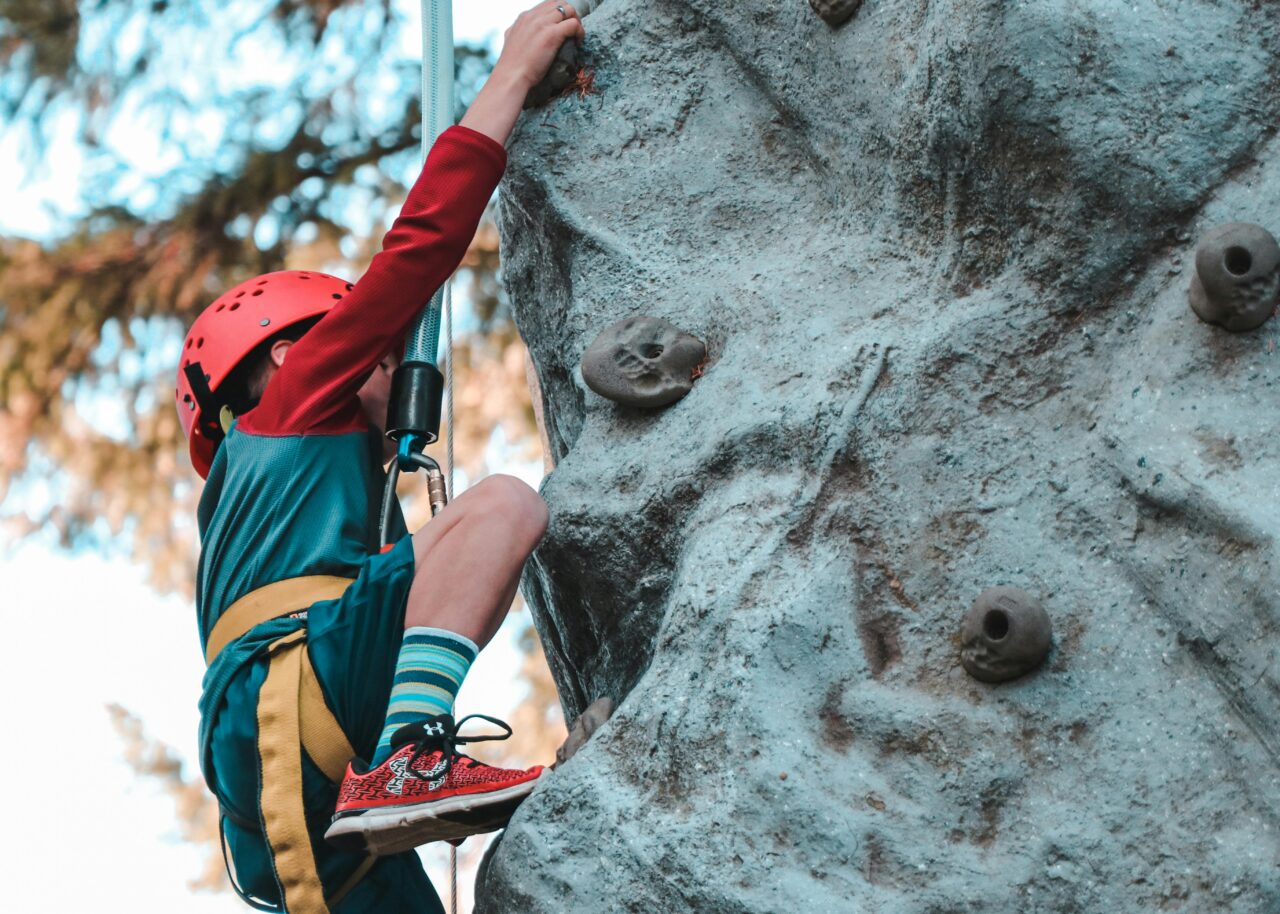By: John Crawley, PT, DPT, OCS
Competitive youth climbing is a rapidly growing sport. With the large increase in indoor climbing gyms has come a significant increase in access to the sport of rock climbing. Many of these gyms have recreational and competitive youth programs that have led to a much larger exposure to the sport for youth athletes. With increased participation, gym access, and sport specialization injury risk profiles have begun to emerge.
Injury rates in youth climbers are between 2.7-4.4 injuries per 1000 hours of participation.1,2,3 The injury risk of 2.7-4.4/1000 hours places rock climbing in the middle of youth athletics in terms of injury risk with sports such as soccer being 7.41/1000hr, basketball 4.2/1000hr, and volley ball 2.67/1000hr.4 Of the injuries sustained by youth climbers, the majority occur at the hand at 36%, with elbow and wrist at 13% and head at 8%.2 Sprains which are ligament injuries, and strains which are muscle injuries are the most injured tissues within the most typical areas or injury.1
Beyond the injury profiles of youth injuries, research has been conducted to determine risk factors that correlate to added injury risk in youth athletes. Increased risk factors for injury include age 15-19, higher climbing difficulty, participation in bouldering, overuse/overtraining, unsupervised climbing, and history of previous injury.1,2,3 Knowing the risk factors that can increase injury risk can help athletes, their coaches, and their parents better monitor the youth’s participation to modify risk.
To reduce risk of injury it is suggested to limit the amount of time that the athlete climbs in a session to 2 hours and to not train or climb greater than their age per week. Having a coach is another good option. Coaches can help monitor training volume, general movement quality, and level of fatigue. Additionally, cross training can be an effective way of reducing risk of injury by reducing load on the hands while still providing a good training stimulus to progress the youth athlete.
With participation in sports, sustaining an injury is always possible. As athletes, coaches, parents, and medical providers we try to reduce the frequency to the best of our ability, however injuries will occur. When they do occur, physical therapists are often the optimal provider to diagnose and treat sport specific injuries. Finding a physical therapist that specializes in treating rock climbers is suggested as they will have the best ability to understand the nature of the injury and will be able to provide the optimal rehabilitation treatment plans.
Click Here to schedule your next appointment with the experts at MEND
References:
- Woollings KY, McKay CD, Kang J, Meeuwisse WH, Emery CA. Incidence, mechanism and risk factors for injury in youth rock climbers. Br J Sports Med. 2015;49(1):44-50. doi:10.1136/bjsports-2014-094067
- Barrile AM, Feng SY, Nesiama JA, Huang C. Injury Rates, Patterns, Mechanisms, and Risk Factors Among Competitive Youth Climbers in the United States. Wilderness Environ Med. 2022;33(1):25-32. doi:10.1016/j.wem.2021.09.005
- Jones G, Johnson R, Schöffl V, et al. Primary Periphyseal Stress Injuries of the Fingers in Adolescent Climbers: A Critical Review. Curr Sports Med Rep. 2022;21(12):436-442. Published 2022 Dec 1.
- Prieto-González P, Martínez-Castillo JL, Fernández-Galván LM, Casado A, Soporki S, Sánchez-Infante J. Epidemiology of Sports-Related Injuries and Associated Risk Factors in Adolescent Athletes: An Injury Surveillance. Int J Environ Res Public Health. 2021;18(9):4857. Published 2021 May 2. doi:10.3390/ijerph18094857

